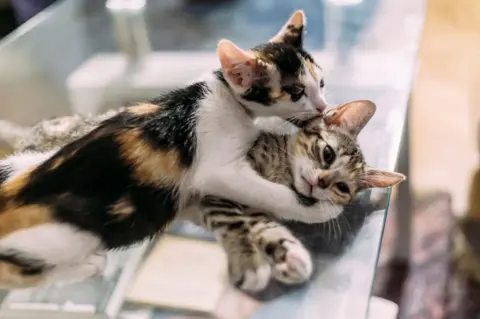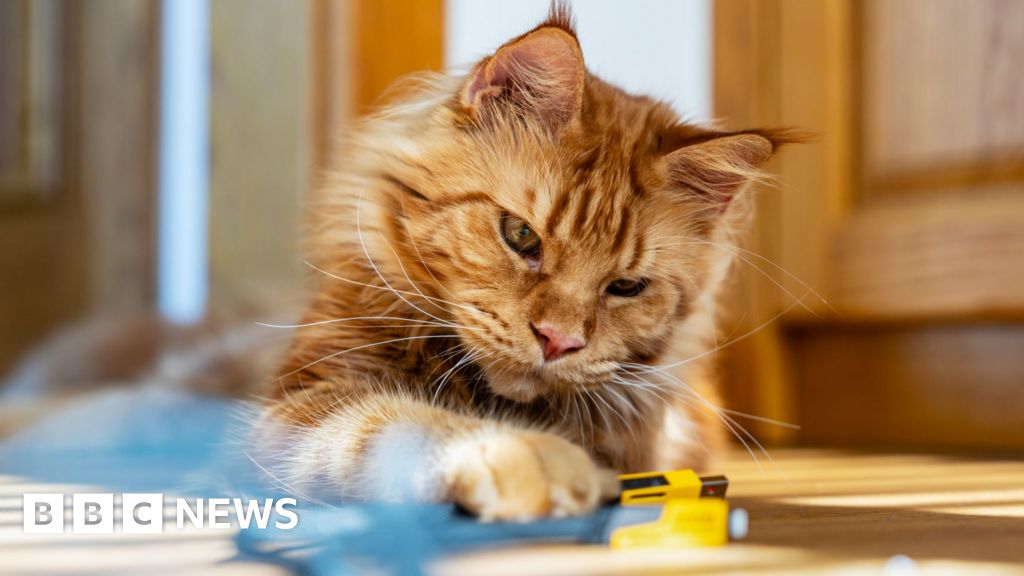Correspondent for climate and science

Getty Images
Iconic characters like Garfield and Puss in Boots represent a cultural favorite: ginger cats.
Recent research from scientists across two continents has unveiled the genetic mystery behind the orange hue found predominantly in male cats.
It turns out that ginger cats lack a segment of genetic coding responsible for the darker pigmentation of their skin and fur, leading to lighter colors.
This discovery has thrilled both researchers and the many cat enthusiasts who funded the study.
The scientists aim to understand if the orange coloration in cats is linked to any health issues.
While it has been known for some time that genetics dictate the orange tabby’s distinctive shade, the specific gene responsible was previously unidentified.
Research teams from Kyushu University in Japan and Stanford University in the US published findings on this gene concurrently on Thursday.
They discovered that within the melanocytes, the cells in charge of fur, skin, and eye colors, the ARHGAP36 gene displayed heightened activity.
Genes consist of DNA segments that instruct a cat’s cells on how to operate.
When examining the DNA of numerous cats, the researchers identified that the ginger-colored cats had a missing segment in the ARHGAP36 gene.
The absence of this DNA allows the ARHGAP36 gene to remain active, which is believed to guide melanocytes to produce lighter pigmentation.
Gender Ratio in Ginger Cats
For many years, researchers have noted that ginger cats are significantly more likely to be male, correlating with the gene’s location on the X chromosome.
Chromosomes consist of larger DNA sections, and male cats possess one X and one Y chromosome, each containing a different set of genes.
Since the pigment-controlling gene is situated solely on the X chromosome, a single missing DNA segment in males suffices to produce an entirely ginger coat.
In contrast, female cats possess two X chromosomes, necessitating deletions in both to exhibit the same degree of lighter pigmentation—resulting in a likelihood of mixed coloring.
“The formation of ginger and black patches occurs because, during early development, one X chromosome in each cell is randomly inactivated,” explains Prof. Hiroyuki Sasaki from Kyushu University.
“As cells divide, this creates regions with various active coat color genes, leading to distinct patches.”

Getty Images
Despite its scientific nature, the study began as a passionate venture for Professor Sasaki.
After retiring, he expressed a desire to continue research on the orange cat gene, hoping it could aid in combating feline diseases.
With the help of fellow cat enthusiasts, he successfully crowdfunded 10.6 million yen (£55,109) to support the study.
One young contributor wrote: “We are siblings in elementary school. We donated our pocket money for research on calico cats.”

Hiroyuki Sasaki/Kyushu University
The ARHGAP36 gene is also crucial in various body parts, including the brain and hormone glands, thus playing a significant developmental role.
Researchers suspect that mutations within this gene may lead to additional changes related to health or behavior.
Links between the ARHGAP36 gene in humans have been associated with skin cancer and hair loss.
“Many cat owners believe that the colors and patterns of a cat’s coat are indicative of their personality,” noted Prof. Sasaki.
“While there’s no scientific evidence to support this yet, it’s a fascinating concept I hope to investigate further.”


